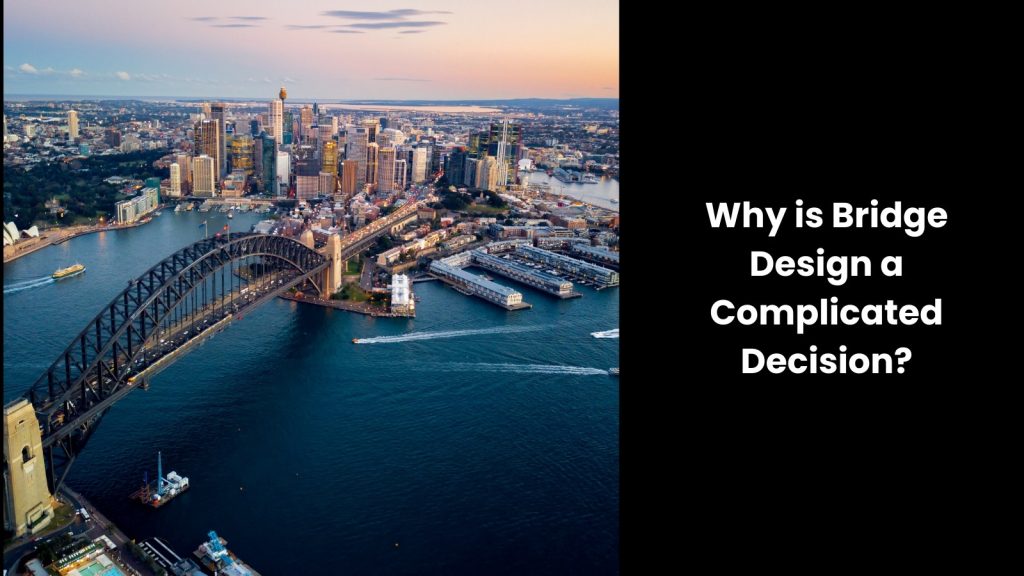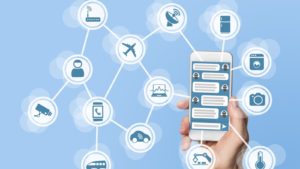Bridge design is not something that can be done without proper coordination of different elements. It is truly a complex blend of science, knowledge, and practicality. It is not just about creating a pathway, but about crafting a structure that can withstand immense forces, freely integrate into its environment, and serve its purpose for generations to come. A long-lasting bridge’s roots lie inside its basic design.
In this article, we will delve into the main factors that bridge designers consider when bringing these essential structures to life.
Why is Bridge Design a Complicated Decision?

- Not only in Australia but all around the world, engineers pay close attention to designing bridges because any mistakes can lead to serious consequences.
- In other words, if they do not design bridges correctly, it can result in dangerous failures, causing accidents, injuries, or even deaths.
- A poorly designed bridge might collapse under heavy traffic or in harsh weather conditions like strong winds, earthquakes, or floods. This not only puts lives at risk but also leads to costly repairs and disrupts transportation.
- This is why it is important to avoid these problems. Engineers use several techniques and technologies in today’s world in order to identify, predict, and decide the best design for the respective bridge, considering a lot of other pillar factors.
Key Considerations for Designing a Bridge in Australia

Traffic Load
One main thing that engineers must consider in deciding on bridge design is the traffic load, as it ensures the bridge can handle the weight and volume of vehicles, pedestrians, and possibly trains that will use it. Australia is a place where traffic loads vary greatly depending on the location.
For instance, a bridge in a busy city will experience heavy traffic from cars, trucks, and buses, while a rural bridge might have less traffic but still need to support large agricultural vehicles. If engineers and authorities ignore traffic loads, the bridge might not be strong enough to handle the weight, leading to dangerous conditions.
As you can see, overloading can cause the bridge to crack, sag, or even collapse, which can result in serious accidents, injuries, or fatalities. The bridge could also suffer from long-term damage. This will ultimately require expensive repairs and cause major disruptions to transportation.
This affects not only daily commuters but also emergency services and businesses that rely on timely deliveries.
Nowadays, authorities use precise calculations and computer models to predict traffic patterns and determine the maximum load the bridge will face. This way, they can design the bridge to withstand this load, including a safety margin to account for unexpected traffic increases.
Span Length
It is a must to consider span length when designing a bridge since it determines the distance the bridge needs to cover between supports.
In any country, the span length can vary widely depending on the location and the purpose of the bridge. For example, a bridge over a wide river or a deep valley requires a longer span, while a bridge over a small creek needs a shorter span.
If the responsible parties do not carefully consider span length, they will have to face several problems later on. Let us explain what those are.
If the span is too long without proper support, then it can lead to structural weaknesses, causing the bridge to sag or bend under its weight. So, what would be the consequence? This can make the bridge unsafe for use and increase the risk of collapse, especially under heavy traffic or extreme weather conditions.
On the other hand, too many supports for shorter spans can make the bridge unnecessarily expensive and complicated to build and maintain. This is why responsible parties need to balance the span length with the type of materials used and the design of the bridge.
Material Selection
Material selection is undoubtedly a top necessity when designing a bridge. That is because the materials are the key to determining the bridge’s strength, durability, and ability to withstand environmental conditions. Australia, of course, is a country with diverse climates that range from tropical to arid, and some areas experience extreme weather like cyclones and bushfires.
Engineers must choose materials that can endure these conditions. For instance, in coastal areas, materials need to resist corrosion from saltwater, while in hot regions, they must withstand high temperatures without weakening.
If this is not done properly, the bridge can suffer from various problems. Using materials that corrode easily can lead to rust and weaken the structure, making the bridge unsafe. Materials that can’t handle heavy loads might crack or deform, leading to potential collapse. These issues not only endanger lives but also lead to costly repairs and disruptions in transportation.
Engineers use materials like high-strength steel, concrete, and sometimes composites to ensure the bridge remains strong and durable. They also consider the availability and cost of materials, aiming for a balance between quality and affordability.
Geotechnical Conditions
Another factor to consider in this case is geotechnical conditions, including soil type, stability, and foundation conditions. You just cannot stay away from them when designing a bridge because these factors are critical for the bridge’s stability and safety.
Australia is witnessing the soil and ground conditions that can vary from one region to another. Some areas might have sandy soils, while others have clay or rocky ground. Each type of soil behaves differently under pressure and weight. For instance, sandy soils will shift or erode easily, while clay soils can expand and contract with moisture changes. If authorities do not consider these geotechnical conditions, the bridge could face serious problems.
A bridge built on unstable soil without proper consideration might sink, tilt, or even collapse. This could happen because the ground cannot support the weight of the bridge and the loads it carries. This is why it has become a key consideration in bridge design in Australia.
Hydraulic Considerations
When thinking about bridge design, how can we forget about hydraulic considerations like water flow, scour potential, flood levels, and navigation requirements? These factors directly impact the bridge’s safety and longevity. In this country, there are many rivers and coastal areas that usually experience varying water levels, strong currents, and potential flooding.
Water flow affects how the bridge interacts with the river or water body beneath it. Strong currents can erode the soil around the bridge’s foundations, a process called scour. If engineers do not design the foundations to resist scour, the bridge can lose support and collapse.
Flood levels are vital because bridges must remain functional and safe during high-water events. If authorities do not account for flood levels, rising waters can overtop the bridge, leading to dangerous conditions and possible structural damage.
Environmental Impact
You cannot ignore the environment when working on development. Yes, this is the theory of the new green world. This is why the construction authorities are forced to consider environmental impact when designing a bridge.
The main reason for this is that it ensures the project does not harm the surrounding ecosystem and complies with environmental regulations. As you can see, Australia has many unique and sensitive environments that need protection, including rivers, wetlands, forests, and coastal areas.
It is like this: A bridge that disrupts natural habitats can harm wildlife, including endangered species. In one way, construction activities can pollute water bodies with sediments, oils, and chemicals, affecting aquatic life. In another way, removing trees and vegetation for bridge construction can lead to soil erosion and the loss of biodiversity.
On the other hand, bridges that do not account for natural water flow can cause flooding or alter water courses, impacting both the environment and nearby communities. Therefore, this has become a main factor to consider when designing bridges in Australia.
Designing the Best Bridge Model in Association with Robust Technology

Yes, Nobody says that it is an easy task to decide the best design for your upcoming bridge planning project. However, it needs to be done to save lives, the environment, and the ongoing development in Australia. The best thing you can do is opt for the latest tools that can help you with bridge design initiatives. If you hold hands with a reputed partner, they will offer you the best designs for the bridge.







